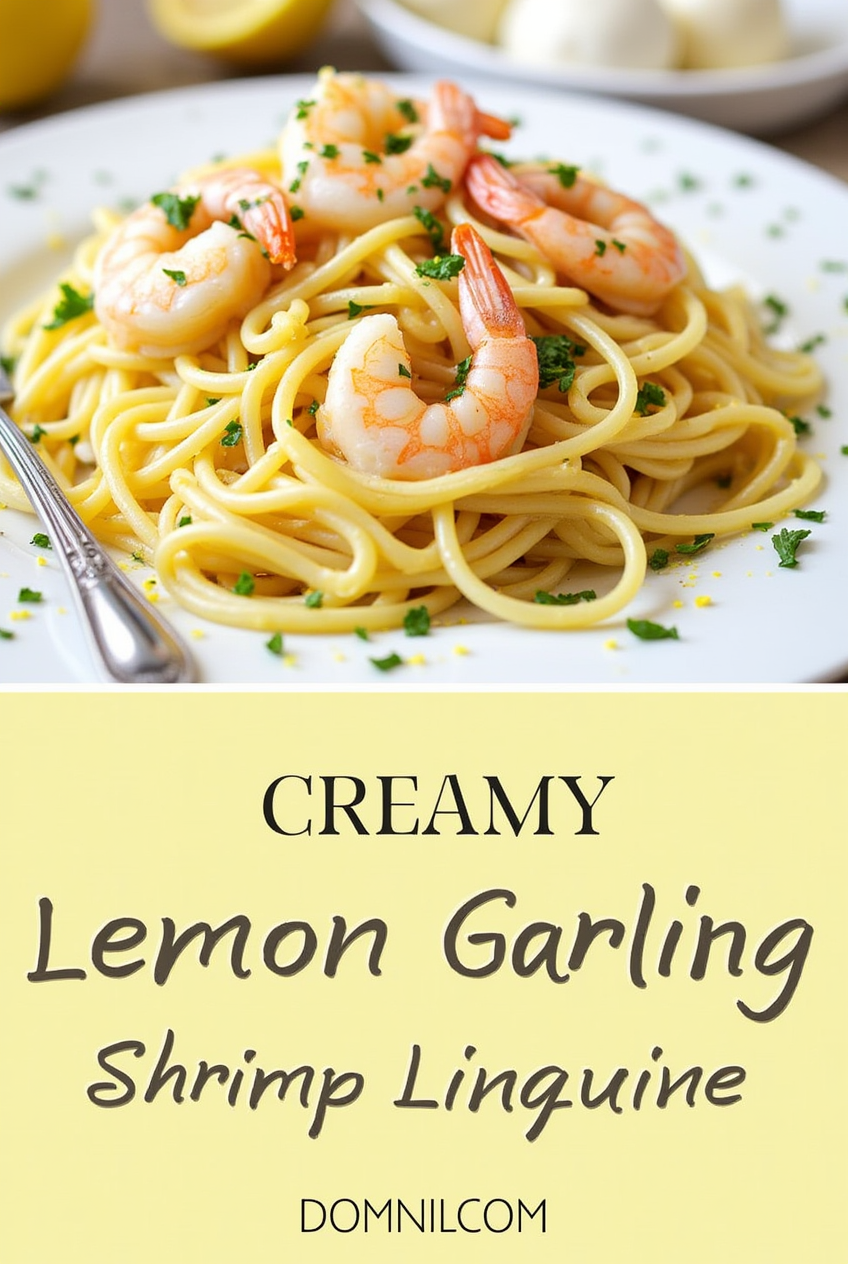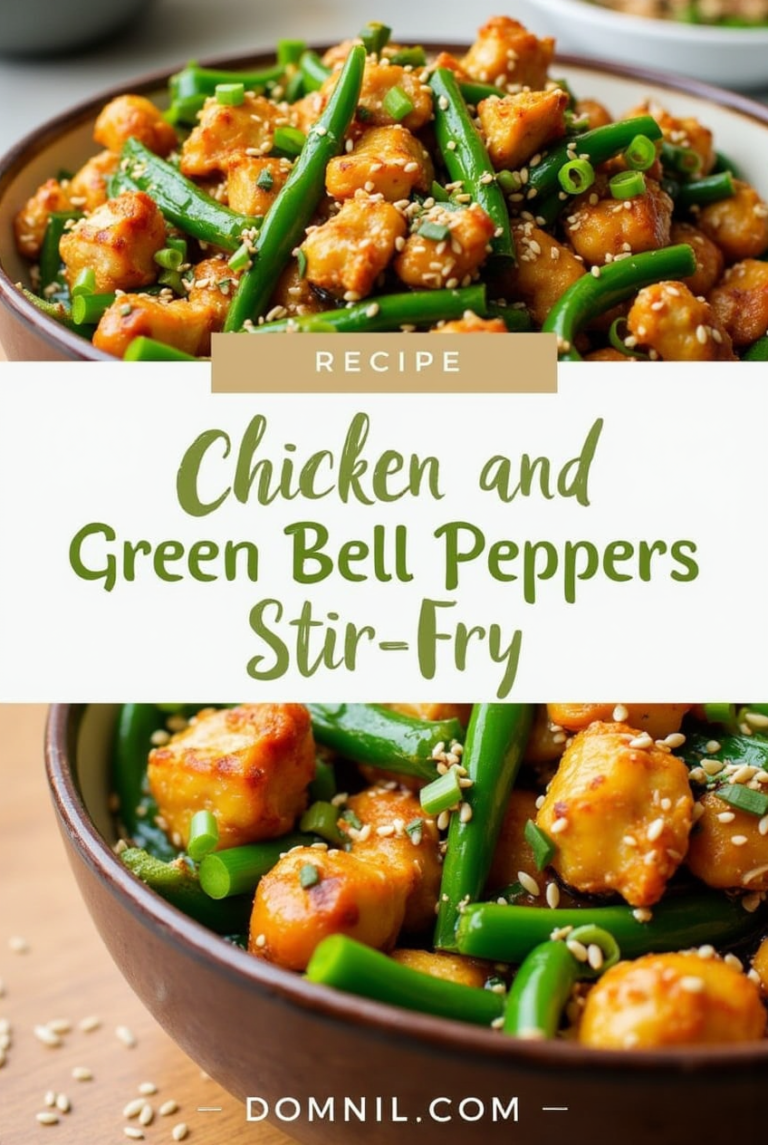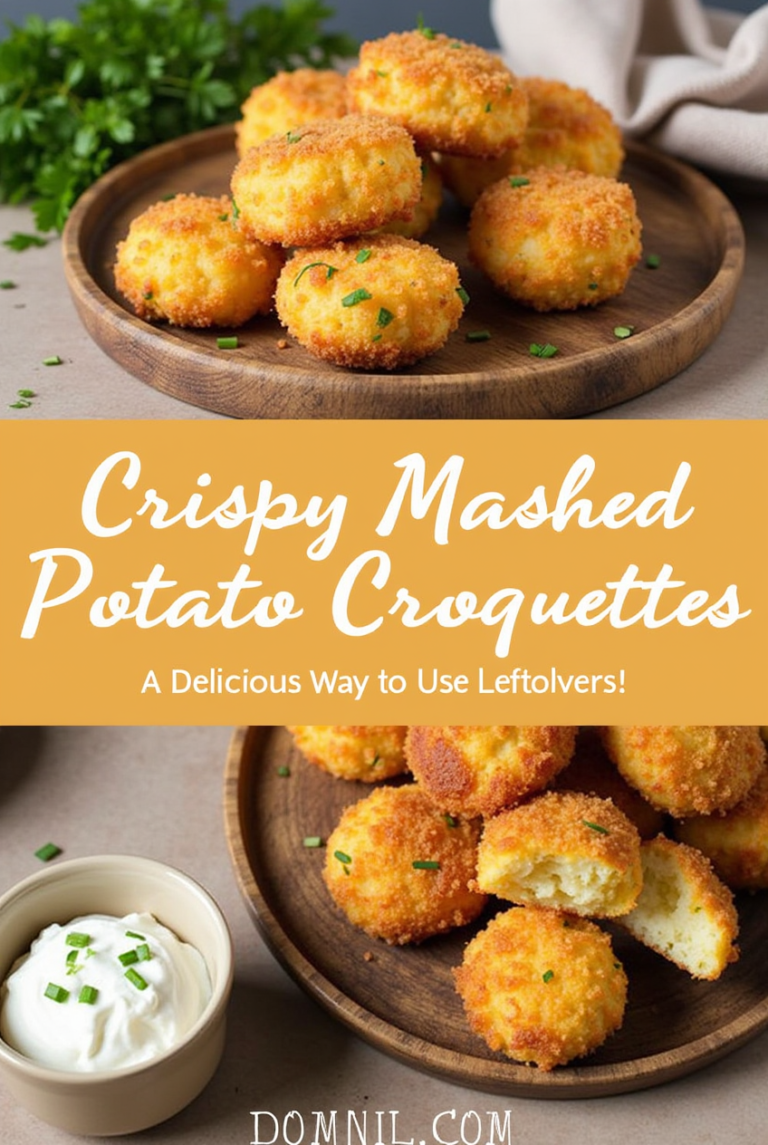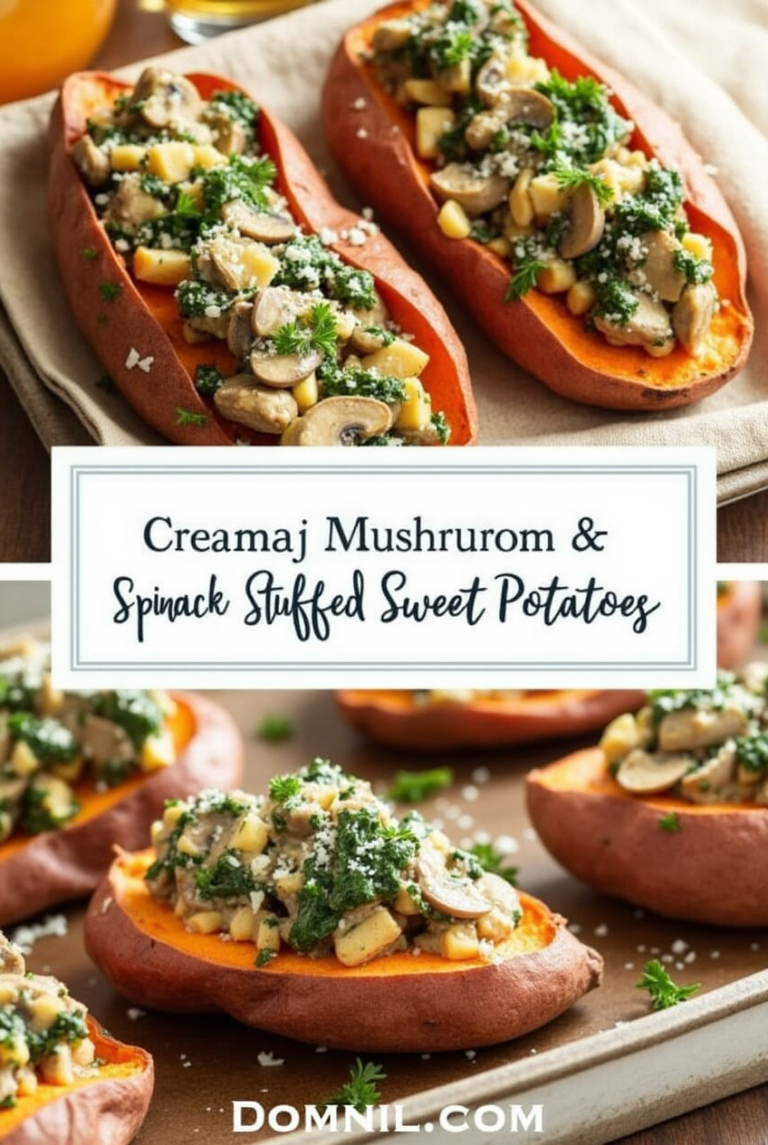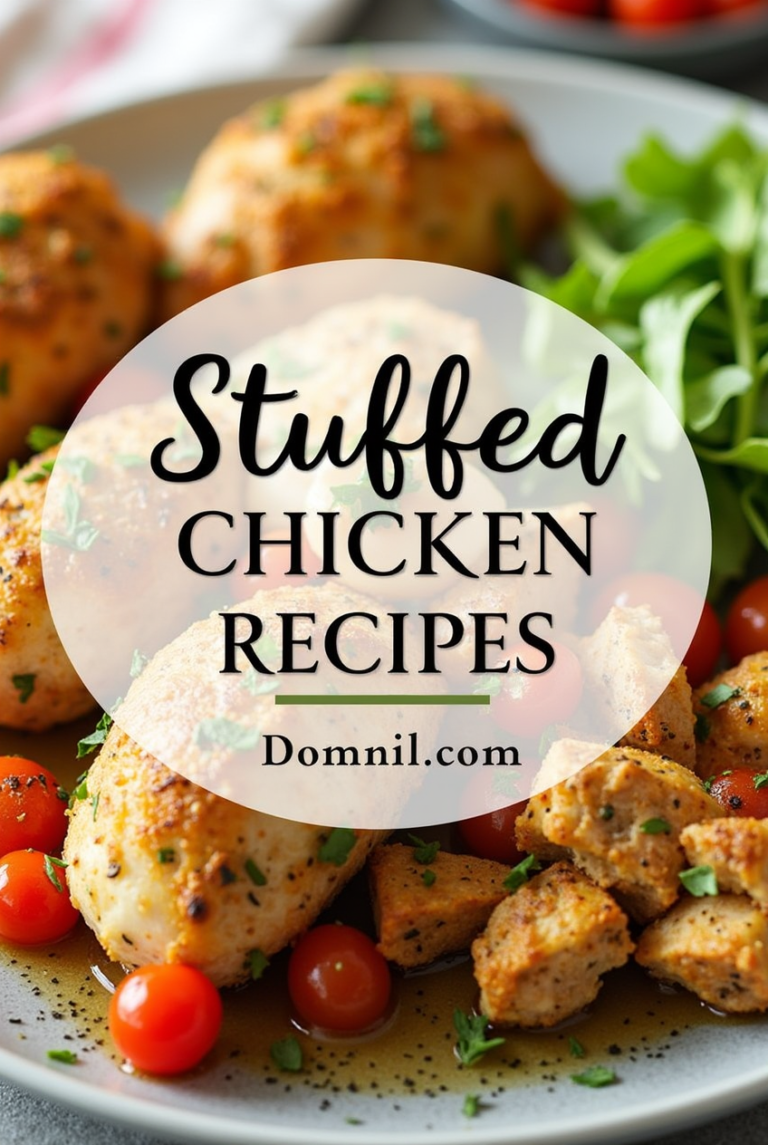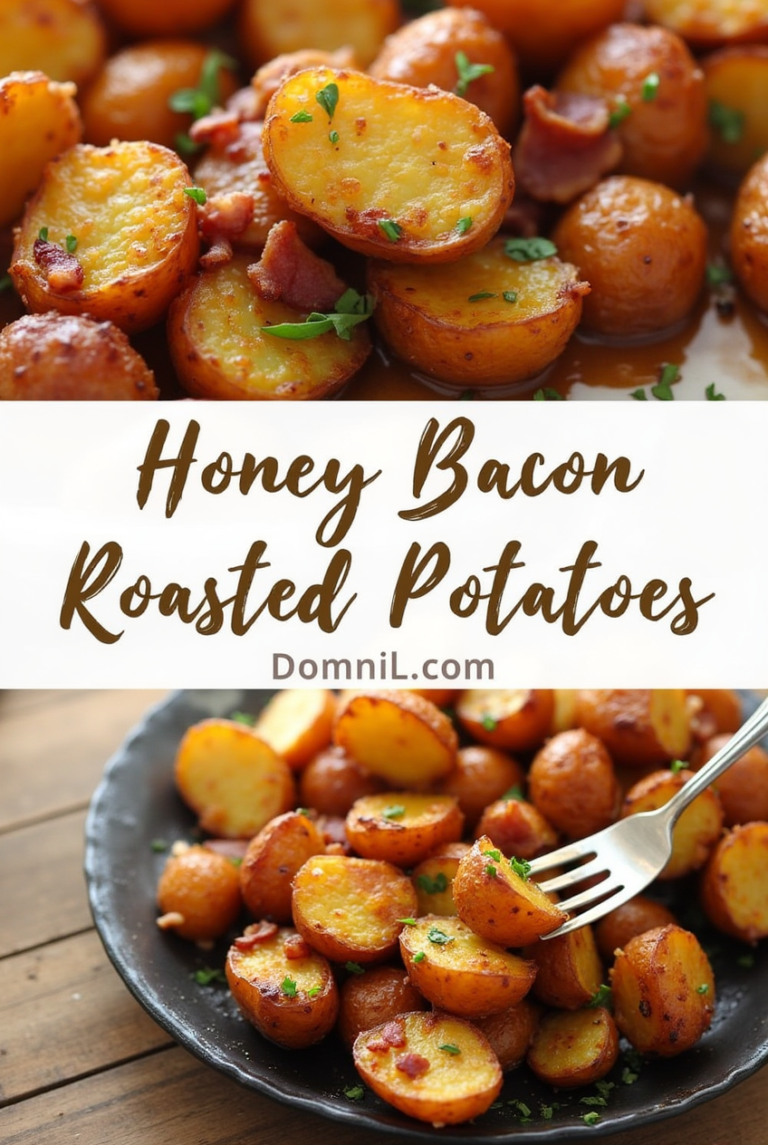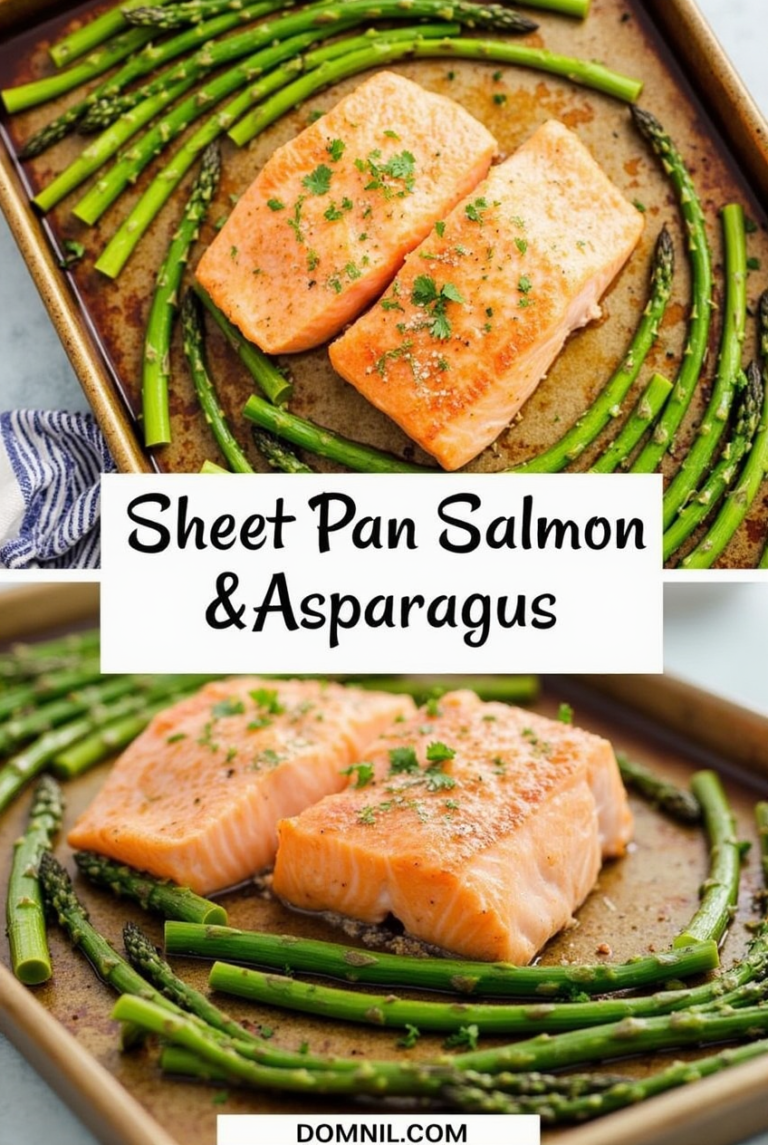Creamy Lemon Garlic Shrimp Linguine Recipe – Easy & Delicious Pasta Dish
Introduction to Creamy Lemon Garlic Shrimp Linguine
If you’re seeking a dish that combines the rich flavors of seafood with the zest of citrus and the aromatic allure of garlic, look no further than Creamy Lemon Garlic Shrimp Linguine. This delectable pasta dish offers a harmonious blend of tender shrimp, al dente linguine, and a luscious creamy sauce infused with lemon and garlic. It’s a perfect choice for both weeknight dinners and special occasions.
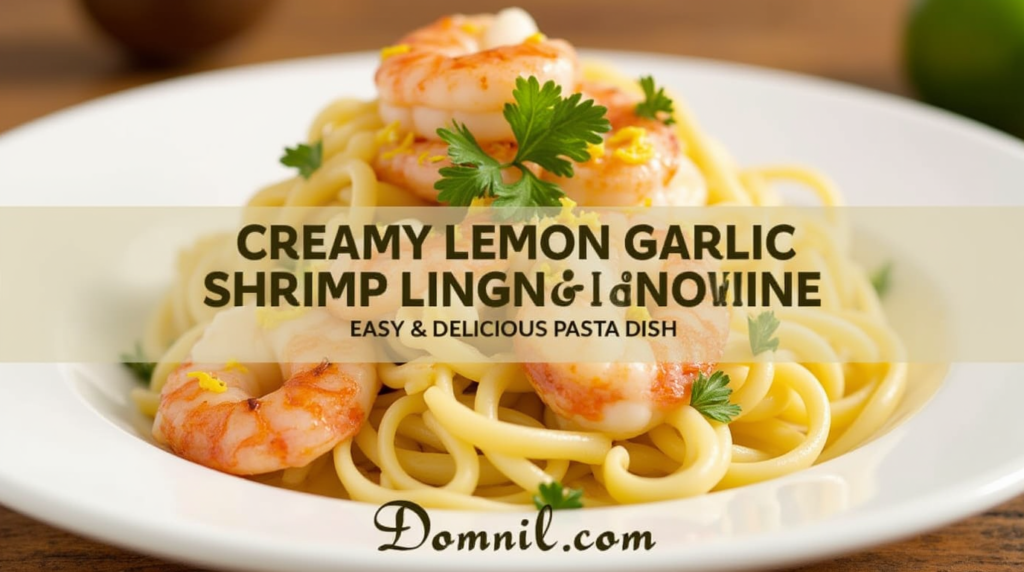
Table of Contents
Introduction to the Dish
A Flavorful Pasta Experience
There’s something deeply comforting about a big bowl of pasta, isn’t there? Now imagine a silky, creamy sauce kissed with the brightness of lemon, the warmth of garlic, and the tenderness of perfectly cooked shrimp. That’s exactly what you get with this Creamy Lemon & Garlic Shrimp Linguine. It’s the kind of meal that feels luxurious yet is surprisingly simple to whip up at home. Whether you’re cooking for yourself, a loved one, or a gathering of friends, this dish never fails to impress.
What makes this pasta special isn’t just the rich sauce—it’s the harmony between the bright citrusy notes and the umami of garlic-infused cream, all tying together with that luscious seafood sweetness from the shrimp. One bite, and you’ll swear you’re dining in a cozy seaside bistro.
It’s also perfect for any occasion. Want something romantic for date night? Done. Need an easy weeknight dinner with flair? This is it. Hosting a dinner party? Watch your guests scrape their plates clean.
Why You’ll Love This Recipe
- Quick & Easy: You can have this dish ready in about 30 minutes. It’s ideal for busy weeknights without compromising flavor.
- Restaurant-Quality at Home: Seriously, this tastes like something you’d get from a high-end Italian trattoria.
- Comforting Yet Bright: Creamy sauces can be heavy, but the lemon lifts it up, adding a refreshing twist.
- Customizable: Don’t eat shrimp? You can swap it out for chicken, scallops, or even go vegetarian with mushrooms.
- Crowd-Pleaser: It’s hard to find someone who doesn’t love pasta—and this version hits all the right notes.
Ingredients Breakdown
Fresh vs Frozen Shrimp – What Works Best?
When it comes to seafood, freshness matters—but don’t be discouraged if all you can get is frozen shrimp. In fact, most shrimp is frozen shortly after being caught to preserve freshness. So what’s the difference?
- Fresh Shrimp: These are ideal if you’re buying from a reliable seafood market. They typically have a firmer texture and a slightly sweeter flavor. But they’re also perishable and should be cooked within a day or two of purchase.
- Frozen Shrimp: Easily accessible, cost-effective, and convenient. Just make sure to thaw them properly—overnight in the fridge is best. Avoid quick-thawing in warm water, which can mess with the texture.
Pro Tip: Opt for deveined, tail-off shrimp for ease, especially if you’re in a hurry. Medium to large shrimp works best, offering bite without overwhelming the pasta.
Key Ingredients and Their Roles
Here’s what you’ll need to gather before you start cooking:
- Linguine – The star of the base. Its flat shape holds onto the sauce beautifully.
- Shrimp – Brings protein and a lovely ocean-fresh flavor.
- Garlic – Essential for that robust, aromatic foundation.
- Heavy Cream – Provides the rich, velvety texture to the sauce.
- Lemon Juice & Zest – Adds brightness and contrast to the creaminess.
- Parmesan Cheese – Deepens the umami and adds a salty bite.
- Butter & Olive Oil – For sautéing and flavor layering.
- Salt, Pepper & Red Pepper Flakes – Seasoning is everything, and the flakes add a subtle heat.
- Parsley (Fresh) – Finishes the dish with color and a herbal touch.
Optional Add-ons for Extra Flavor
Want to elevate things even further? Try these additions:
- White Wine – Add a splash to the pan while sautéing garlic for depth.
- Spinach or Kale – Stir in for added nutrients and a pop of green.
- Cherry Tomatoes – A burst of sweetness and acidity.
- Capers or Anchovy Paste – For a briny, Mediterranean punch.
Mix and match according to your taste—there are no hard rules!
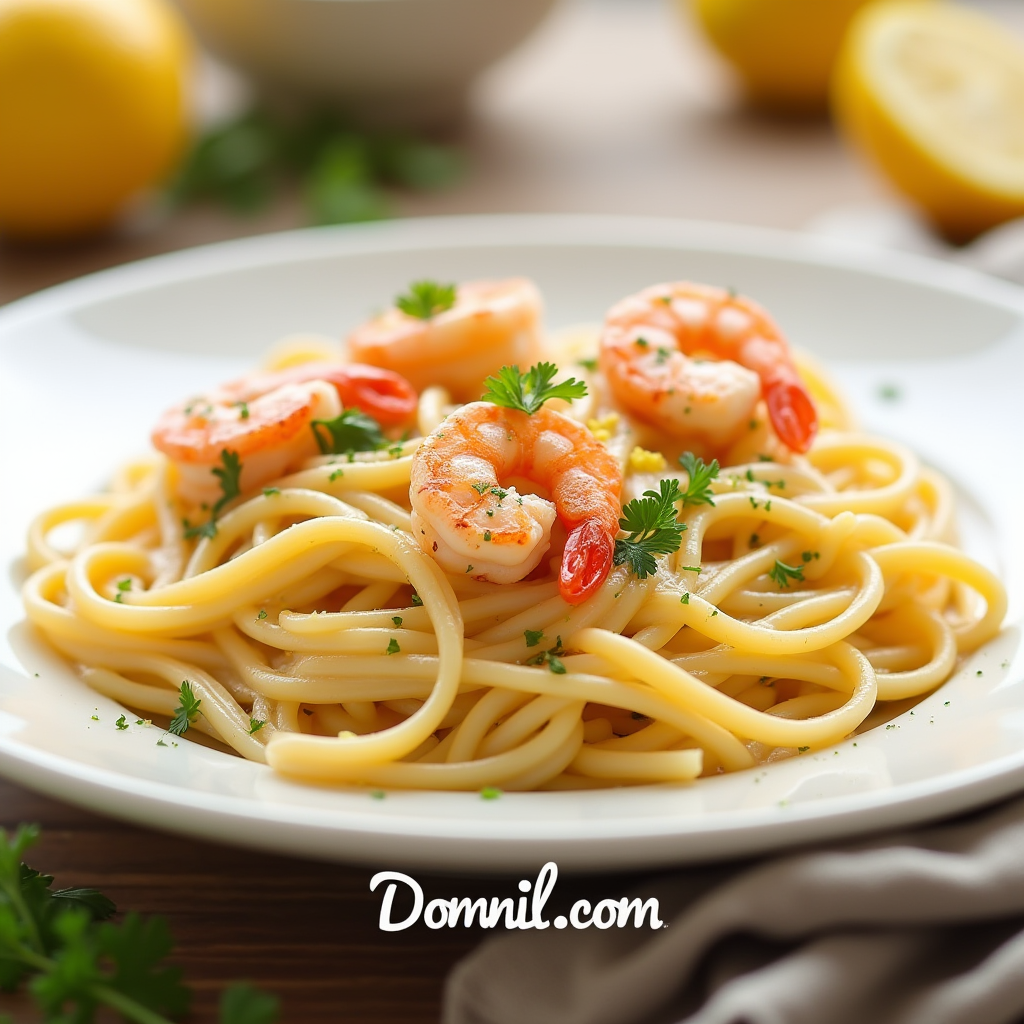
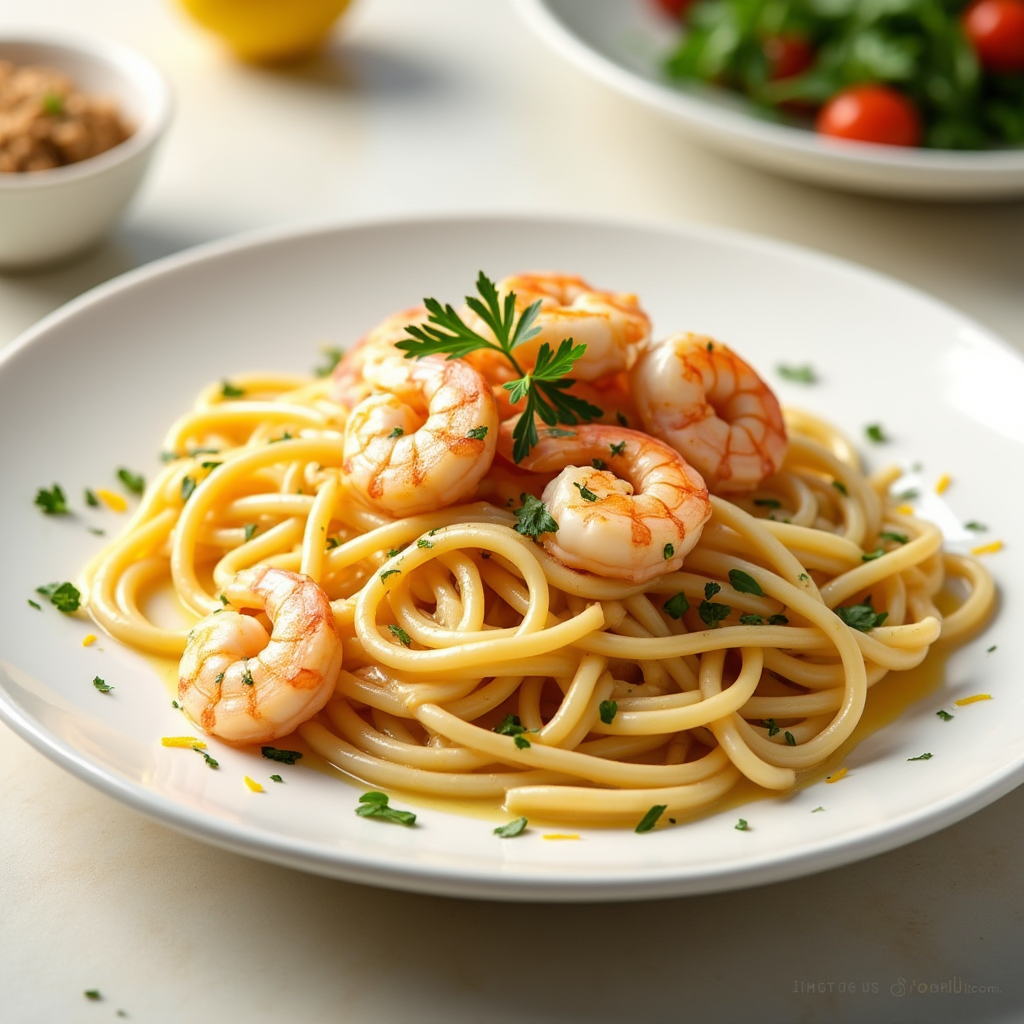
Kitchen Tools You’ll Need
Essential Utensils and Appliances
You don’t need fancy gear to make this dish, but having the right tools makes the process smoother. Here’s your basic kitchen toolkit:
- Large Pot – For boiling the linguine.
- Large Skillet or Sauté Pan – To build the sauce and toss the pasta.
- Colander – For draining pasta (don’t forget to reserve a bit of pasta water!).
- Microplane or Zester – For lemon zest, which adds essential citrus oil to the sauce.
- Garlic Press or Chef’s Knife – However you prefer to handle garlic.
- Tongs or Pasta Fork – To toss and serve the pasta evenly.
Pro Tips for Preparing the Pasta
- Salt the Water Generously: It should taste like the sea. This is your only chance to season the pasta itself.
- Don’t Overcook the Pasta: Aim for al dente. It’ll continue cooking slightly when tossed with the sauce.
- Reserve Pasta Water: A bit of that starchy water can help emulsify the sauce and coat the linguine like a dream.
Step-by-Step Cooking Instructions
Preparing the Shrimp
Start by making sure your shrimp is peeled, deveined, and patted dry. Moisture is the enemy of a good sear.
- Season Lightly: A pinch of salt, pepper, and maybe a squeeze of lemon.
- Sauté in Batches: Overcrowding the pan will steam the shrimp instead of searing it. Cook in olive oil until just pink—about 2 minutes per side.
- Remove & Set Aside: Don’t leave them in the hot pan—they’ll keep cooking and turn rubbery.
Making the Creamy Lemon Garlic Sauce
This is where the magic happens.
- Start with Butter & Garlic: Melt butter, add minced garlic, and let it sizzle until fragrant (about 30 seconds).
- Deglaze (Optional): A splash of white wine here lifts all the tasty bits off the pan.
- Add Cream: Pour in the heavy cream slowly and stir gently.
- Lemon Time: Add lemon juice, zest, and a pinch of red pepper flakes.
- Cheese It Up: Stir in grated parmesan until melted and incorporated.
You’ll notice the sauce thickens slightly as it simmers—don’t boil it or it may split.
Cooking the Linguine Perfectly
There’s an art to cooking pasta, and getting it just right can be the difference between a good dish and a great one. Since linguine is slightly thicker than spaghetti, it holds creamy sauces particularly well—but only if it’s cooked properly.
- Boil a Large Pot of Water: You want plenty of water to give the pasta room to move freely.
- Salt the Water Heavily: Seriously, don’t hold back. This isn’t just for flavor—it also enhances the texture of the noodles.
- Stir Immediately After Adding Pasta: This prevents clumping or sticking.
- Cook Until Al Dente: Follow the time on the box, but start checking a minute early. You want it to still have a slight bite in the center.
- Reserve Pasta Water: Scoop out at least half a cup before draining. The starch in the water is a natural emulsifier and helps the sauce cling to the noodles like magic.
- Drain and Don’t Rinse: Rinsing washes off the starch and flavor you’ve built up.
Pro Pasta Tip: Add a bit of butter or oil to the drained linguine if you’re not tossing it in the sauce immediately to prevent sticking.
Bringing It All Together
Now comes the best part—melding all the components into a dish that’s smooth, balanced, and ridiculously satisfying.
- Add Cooked Linguine to the Sauce: Toss gently in the skillet with the creamy lemon garlic sauce.
- Reintroduce the Shrimp: Let them soak in the sauce and reheat slightly.
- Adjust Consistency: Add a splash or two of the reserved pasta water to loosen the sauce if it feels too thick.
- Final Seasoning Check: Add more salt, pepper, or lemon juice to taste. Maybe a tiny pinch of sugar if the sauce is overly acidic.
- Garnish & Serve: Finish with chopped parsley, extra parmesan, a drizzle of good olive oil, and maybe even a lemon wedge on the side.
Serve hot and fresh. Trust me, the steam rising with those citrusy, garlicky notes is downright intoxicating.
Cooking Tips and Variations
Common Mistakes to Avoid
- Overcooking the Shrimp: This is the number one way to ruin the texture. Shrimp should be just opaque and tender, not rubbery.
- Boiling the Cream: A gentle simmer is key to prevent the cream from curdling.
- Not Using Pasta Water: It’s your natural thickener and binder—don’t toss it!
- Using Bottled Lemon Juice: Always go fresh. The zest and juice from a real lemon are non-negotiable.
- Skipping Garlic Prep: Burnt garlic = bitter sauce. Watch it closely.
Making It Healthier – Light Alternatives
Want to cut some calories or lighten things up a bit? No problem.
- Swap Heavy Cream: Try half-and-half, Greek yogurt, or a blend of milk and cornstarch.
- Use Whole Wheat or Gluten-Free Pasta: Tons of options available now that taste great and add fiber.
- Load Up on Veggies: Add mushrooms, spinach, asparagus, or zucchini ribbons for bulk without heaviness.
- Reduce Cheese: Use a modest amount of parmesan or a low-fat alternative for flavor without overdoing the fat.
Variations – Make It Your Own
This dish is endlessly flexible. Try out these fun twists:
- Cajun Style: Add a teaspoon of Cajun seasoning for a spicy Southern kick.
- Mushroom Cream Linguine: Skip the shrimp and sauté mushrooms for an earthy, umami-packed version.
- Add Greens: Wilt in spinach, arugula, or kale for color and nutrients.
- Vegan Version: Use plant-based butter, coconut cream, and meatless shrimp or just go full veggie.
Experiment freely—your tastebuds will thank you.
Wine Pairing and Serving Suggestions
Best Wines to Complement the Dish
Pairing wine with pasta is more than fancy flair—it genuinely enhances the experience.
- Chardonnay: A buttery Chardonnay pairs beautifully with the creamy sauce.
- Sauvignon Blanc: Crisp, citrusy, and refreshing—great for cutting through richness.
- Pinot Grigio: Light and easygoing, this Italian white complements shrimp without overpowering it.
- Sparkling Wine: For something festive, a dry Prosecco works wonders.
Avoid: Heavy reds like Cabernet—they’ll clash with the cream and seafood.
How to Plate Like a Pro
Presentation makes a big difference. Here’s how to serve it with style:
- Use Shallow Bowls: This keeps the sauce pooled nicely around the noodles.
- Twirl Linguine with Tongs: Create a nest shape on the plate for a restaurant-style look.
- Garnish Thoughtfully: Fresh parsley, lemon zest, and a dusting of parmesan do more than decorate—they add layers of flavor.
- Serve with Sides: Crusty garlic bread, a fresh arugula salad, or roasted veggies all make great companions.
Storage and Reheating Tips
Keeping Leftovers Fresh
So, you’ve got some leftovers (lucky you!). The key is keeping that creamy sauce from turning into a gloopy mess the next day. Here’s how to store it properly:
- Cool It Fast: Don’t leave your shrimp linguine out for hours. Let it cool at room temperature for 15–20 minutes, then store immediately.
- Use Airtight Containers: Glass or BPA-free plastic containers with tight lids work best to preserve moisture and flavor.
- Fridge Life: It will last well in the fridge for up to 3 days. After that, the shrimp starts to get funky.
- Freezing? Not Ideal: Cream sauces often separate when frozen and reheated. Plus, shrimp can get rubbery. If you must freeze it, wrap it tightly and consume within a month—but fresh is always better.
Reheating Without Losing Flavor
Nobody wants sad, dried-out leftovers. Here’s how to bring your dish back to life:
- Stovetop Method (Best Choice):
- Add a splash of milk, cream, or reserved pasta water to a skillet.
- Reheat the pasta on low, stirring gently.
- Add shrimp last to avoid overcooking.
- Microwave Method (If You Must):
- Use a microwave-safe dish with a lid (or cover with a damp paper towel).
- Heat in 30-second bursts, stirring between each round.
- Add extra cream or milk to loosen the sauce if it thickens too much.
Quick tip: Always reheat gently. High heat will cause the cream to separate and the shrimp to toughen.
Nutritional Breakdown
Calories and Macronutrients
While this dish is decadent, it can still fit into a balanced diet—especially if you practice portion control or modify the ingredients.
Here’s a rough estimate per serving (1 of 4 servings from the full recipe):
| Nutrient | Amount |
|---|---|
| Calories | ~600-700 kcal |
| Protein | ~30-35g |
| Carbohydrates | ~45-50g |
| Fats | ~35-40g |
| Fiber | ~3g |
| Sugar | ~3g |
Keep in mind, this can vary based on the size of your shrimp, amount of cream, or if you added cheese liberally (we know you did!).
Gluten-Free or Dairy-Free Options
Need to cater to dietary restrictions? Easy peasy:
- Gluten-Free: Swap regular linguine for gluten-free pasta made from rice, corn, or chickpeas. Just watch the cook time—some gluten-free pastas can go mushy quickly.
- Dairy-Free: Use coconut cream, cashew cream, or unsweetened almond milk with a cornstarch slurry as your creamy base. Nutritional yeast or vegan parmesan can sub in for the cheese flavor.
- Low-Carb/Keto: Replace the linguine with spiralized zucchini or shirataki noodles. The sauce still shines on these alternatives!
Frequently Asked Questions (FAQs)
Q1: Can I use pre-cooked shrimp for this recipe?
Yes, but be very careful not to overcook them. Since they’re already done, add them at the very end just to warm them through—no more than a minute or two.
Q2: What can I use instead of heavy cream?
You can swap in half-and-half, whole milk (with a bit of cornstarch to thicken), or non-dairy options like coconut milk or cashew cream.
Q3: Can I make this dish ahead of time?
It’s best fresh, but you can prepare components ahead. Cook the shrimp and pasta, store separately, then reheat and combine with the sauce when you’re ready to serve.
Q4: What herbs can I add besides parsley?
Basil, thyme, or chives work beautifully. Dill can be lovely too, especially with the shrimp and lemon combo.
Q5: Can I make it spicy?
Absolutely! Add more red pepper flakes, or toss in some chopped chili or a dash of hot sauce for a kick.
Conclusion
This Creamy Lemon & Garlic Shrimp Linguine is more than just a meal—it’s a sensory experience. From the tender shrimp and zesty lemon to the garlicky cream sauce that hugs every strand of pasta, this dish is pure indulgence made simple. It’s the kind of recipe that becomes a go-to comfort food, a dinner party star, or a romantic evening highlight.
And the best part? You don’t need to be a chef to nail it. With a little attention to detail and some quality ingredients, you’ll be plating up something that rivals your favorite restaurant dish.
Whether you follow this recipe to the letter or put your own twist on it, one thing is certain: your taste buds are in for a treat. Happy cooking—and don’t forget to grab a fork, a glass of wine, and someone to share it with (or not—we won’t judge).

